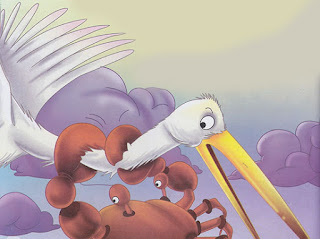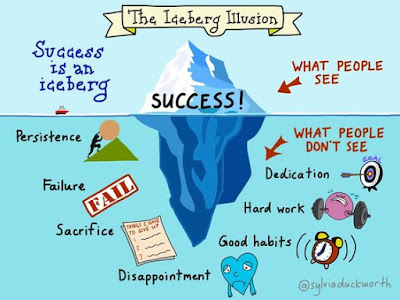Reading Notes: Week 2 Anthology
AUTHOR: W. H. D. Rouse
TITLE: The Cunning Crane and the Crab
LINK: https://sites.google.com/view/jatakas/crane-and-crab
Visualization of the Crane and Crab. (Picture obtained from here)
As a child, I loved Aesop fables because they were centered around animals and taught a lesson; there is something alluring about humanizing creatures that cannot talk and leave us assuming their thoughts. While as a kid those end-story lessons might have helped develop a moral compass, these lessons now serve as a reminder to be a good person. It was one story versus a two-in-one story (like two different tales being compared). Reading the story of The Cunning Crane and the Crab was nice nostalgia for these reasons which is why I chose it from the other Jakarta tales.
The tale itself is between three main animal groups: the crane, the fish, and the crab. The title only mentions the crab, but the fish played a major impact in the story. The fish were the crane's main prey and suffered the most at the hands of the crane. In addition to creating resentment towards the crane, the fishes' were meant have the reader sympathize and possibly even empathize with them. The sympathy part is displayed with the old, one-eyed fish. Not only is the crane lying and murdering these fishes for self-gain, but that to by first using an old, disabled fish. Even though the fish could have maybe been a bit smarter, they were definitely bamboozled by the crane so the crane is perceived as the villain. The empathy part comes into play because the reader might feel they would react the same way as the fish. Most people might not be as cynical as the crab. For those not like the crab, while some caution may initially be taken, (the first trip of the one-eyed fish), it is easy to trust people after this 'caution test'.
The crab is not meant to be empathized in the same way like the fish, but rather be a hero. The crab delivers justice to the crane's wrongful behavior. His death symbolizes the golden rule. This is the crab's main purpose, but also highlights helpful qualities such as resourcefulness, thinking ahead, and being aware of your surroundings.
Each of these animals are meant to provoke certain individual emotional responses from the reader. While there are many interpretations that can be drawn, the overall gist is not to "be like the crab", but rather, do as to others as you would have done unto you.




Comments
Post a Comment